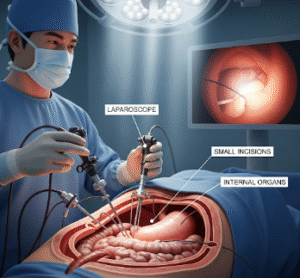Korea Leading the Nano Revolution in Medicine
South Korea is fast becoming a world leader in medical nanotechnology, merging science, medicine, and innovation to improve how we diagnose, treat, and prevent diseases. Nanotechnology works at the scale of one-billionth of a meter, allowing scientists to create microscopic tools that can heal the body from the inside out.
Korea’s top universities — Seoul National University, KAIST, POSTECH, and KIST — are partnering with biotech firms to develop nanoparticles, nanosensors, and smart drug delivery systems that are already transforming hospitals and clinics.
➤ Smarter Drug Delivery Systems
Traditional medicines often affect both healthy and diseased cells, causing unwanted side effects. Korean researchers are changing that with nanoparticle-based drug delivery systems that target only the problem areas.
➤ Lipid nanoparticles are being developed to deliver cancer drugs directly to tumor sites.
➤ pH-sensitive nanocarriers release medicine only in acidic environments, such as tumors, protecting healthy tissues.
➤ Sustained-release nanoparticles allow medicine to be released gradually — meaning fewer doses for patients.
Lifestyle benefit: This technology reduces hospital visits and improves medication adherence, especially for chronic illnesses like diabetes and arthritis.
➤ Targeted Cancer Therapies
Cancer is one of Korea’s main health priorities, and nanotechnology is offering new hope.
➤ Gold nanoparticles are used for both treatment and imaging — they can locate tumors and deliver therapy at the same time.
➤ Magnetic nanoparticles heat up under external magnetic fields to destroy cancer cells in a process called magnetic hyperthermia.
➤ Nanovaccines train the immune system to recognize and attack tumor cells safely.
These new cancer-fighting tools mean less damage to healthy cells, fewer side effects, and faster recovery.
➤ Regenerative Medicine and Healing
Nanotechnology isn’t just treating diseases — it’s helping the body heal itself.
Korean scientists are creating nanostructured scaffolds that mimic the body’s natural tissue structure. Cells can grow along these scaffolds to regenerate skin, bone, and even nerve tissue.
➤ Nanofiber scaffolds are used for repairing spinal cord injuries.
➤ Nanocomposite gels help heart tissue regenerate after heart attacks.
➤ Nano-hydroxyapatite strengthens bone and dental implants.
Lifestyle impact: Faster healing, stronger recovery, and fewer complications after surgery or injury.
➤ Early Diagnosis with Nanosensors
Detecting diseases early saves lives — and Korea is leading in nano-diagnostics.
➤ Nanosensors can detect cancer or infection markers in a single drop of blood.
➤ Wearable nanotech patches track glucose, oxygen, and cholesterol levels in real time.
➤ Graphene-based biosensors identify cancer cells long before imaging scans can.
Everyday benefit: These tiny sensors can turn routine checkups into real-time health monitoring — ideal for busy lifestyles.
➤ Nanotechnology in Medical Imaging
Nanotech is making medical imaging clearer and safer.
➤ Iron oxide nanoparticles are improving MRI and CT scans by highlighting cancer cells.
➤ Fluorescent quantum dots light up diseased areas, helping surgeons remove only the affected tissue.
➤ AI-powered imaging analyzes nanoparticle-enhanced scans for faster diagnosis.
Result: More accurate imaging, earlier detection, and personalized treatment planning.
➤ Collaboration Between Government, Industry, and Research
Korea’s success in nanomedicine is powered by teamwork.
➤ The Ministry of Science and ICT and Ministry of Health fund national nanotech projects worth billions of won.
➤ Samsung Biologics, SK Bioscience, and LG Chem are investing in nanomedicine startups.
➤ Universities and hospitals work together to move research from the lab to real patients.
Outcome: Faster innovation, better safety standards, and accessible healthcare technology for everyone.
➤ Challenges and Safety Efforts
Nanotechnology brings big benefits but also requires responsibility. Korean researchers are studying how nanoparticles interact with the body to ensure long-term safety.
➤ Development of biodegradable nanomaterials that break down naturally.
➤ Strict testing and regulation by the Korean Food and Drug Administration (KFDA).
➤ Ethical studies on data privacy and AI health monitoring to protect patients.
Korea’s balance of innovation and responsibility makes it a global model for safe nanotech development.
➤ The Future of Korea’s Nanotech Healthcare
The future of Korean healthcare is bright and nano-powered. Researchers are combining AI, nanotech, and genomics to create personalized medicine for each patient.
➤ Wearable nanosensors could alert your doctor before symptoms appear.
➤ Smart nanodrugs may release treatment automatically when illness is detected.
➤ Green nanomedicine is being developed using eco-friendly, biodegradable materials.
Lifestyle impact: Preventive care will become part of daily life — healthier living through technology that quietly works inside your body.
Conclusion: The Power of Small Things
Korea’s advancements in medical nanotechnology are proving that the smallest innovations can bring the biggest health changes. From targeted drug delivery and regenerative therapies to AI-driven diagnostics, Korea is transforming how medicine works — and how people live.
By blending technology, compassion, and scientific excellence, Korea is shaping a healthier, longer, and more personalized future — not just for its citizens, but for the entire world.












